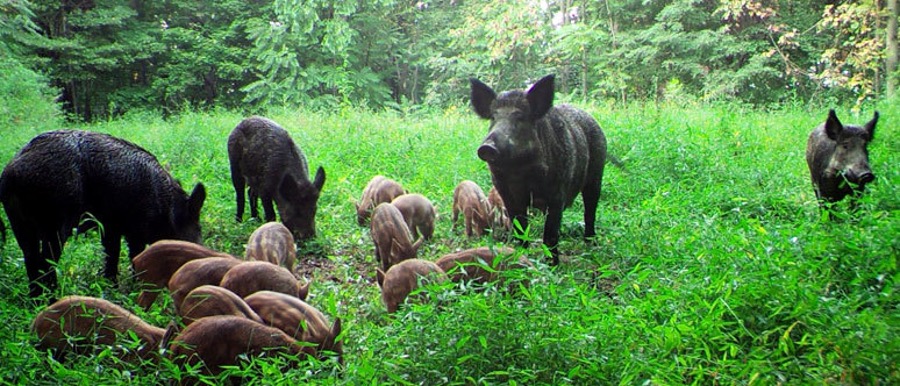The next step for pilot projects to control feral swine
Selecting a target is critical. Oklahoma’s conservation partnership identified two locations to pilot control of feral swine; Western Red River (Harmon, Jackson, Cotton and Tillman Counties) and Kay County.

These areas were selected with great thought and input: Kay County where the goal is to keep the feral swine population in check and reduce the chances of feral swine from migrating into Kansas, and the Western Red River watershed in a multi-state effort in conjunction with Texas conservation partners to significantly reduce the feral swine population where the invasive species have created substantial economic losses. A goal of the latter is also to create a “feral swine free zone” along the Red River.
The Oklahoma Conservation Commission (OCC) submitted the successful proposals, totaling $1.04 million, to lead both pilot efforts.
“Oklahoma has struggled with the invasion and exponential growth of feral hogs for years now,” said Trey Lam, Executive Director of the Oklahoma Conservation Commission. “Crops and pastures are being destroyed. Water quality of our streams and lakes are being degraded. Wildlife and its habitat are being destroyed. This USDA grant will provide funds and manpower from state and federal partners to target feral swine in specific geographic areas. Our emphasis will be on keeping the eradication locally directed by utilizing local Conservation Districts working through their cooperating farmers and ranchers.”
These projects are part of the Feral Swine Eradication and Control Pilot Program (FSCP) – a joint effort between USDA’s Natural Resources Conservation Service (NRCS) and Animal and Plant Health Inspection Service (APHIS) to help address the threat that feral swine pose to agriculture, ecosystems and human and animal health.
This week, Lisa Knauf Owen, the Oklahoma Conservation Commission Assistant Director, provided a closer look at the pilot projects.
One of the key components of both pilot projects is the use of pre- and post-water quality monitoring. Using water quality data collected through the OCC Rotating Basin Monitoring Program, the agency will establish a water quality baseline for two small streams in the project areas for comparison with post implementation water quality data. This information will be used to prioritize additional efforts in areas with the strongest overlap between feral swine-related water quality problems and agricultural damage by feral swine. These areas will be the focus of more intensive water quality monitoring that will involve more frequent turbidity and bacteria testing. Post implementation data will be collected in 2023 for comparison to 2019 conditions to evaluate improvements in water quality as a result of feral swine control.
Conservation Districts will play a major role in making contact with landowners to gather damage assessments, schedule access for USDA-APHIS trappers, pre-bait areas for trapping, and monitor trapping sites. Conservation Districts will also be providing outreach to all county residents as to the need for controlling feral swine populations and educating agricultural producers about programs available to assist with damage repair. The Districts will provide landowners with current information regarding conservation practices and programs that are available to address current resource concerns.
The Conservation Commission and districts will employ and supervise a technician to serve as the local project coordinator. The OCC project coordinator/technician will work side-by-side with USDA-APHIS Wildlife Services personnel and the current Conservation District staff to deploy feral swine traps to infested areas. The coordinator/technician would be responsible for monitoring and baiting traps, landowner relations and coordinating with USDA-APHIS Wildlife Services personnel in the area.
Owen added, “The project duration is expected to be36 months. At the end of the project period, it is the agency’s goal to have a self-sustaining, feral swine control program administered by the local Conservation Districts.”
“On my own farm I have experienced losing a stand of corn and wheat to feral swine destruction,” said Lam, who farms in southern Oklahoma. “I know how frustrated our citizens are with the seemingly uncontrollable expansion of feral swine. This pilot project is only the first step in a long battle to reduce feral swine damage. The Oklahoma Conservation Commission, USDA Natural Resources Conservation Service, APHIS Wildlife Services and our local partners are committed for the long haul.”
